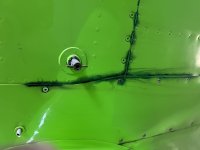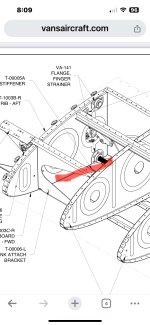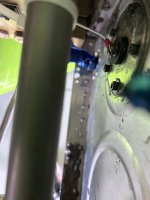Trying to use vacuum to suck in small amount of pro seal (Flamemaster) on bottom inboard flange near drain valve. It doesn’t drip, but starts staining the seam, and I wipe off after each flight. I also noticed the bead of sealant is very gummy on the outside of the seam in that area, when the inboard panel is removed. Trying to avoid removing the tank with this process 1st.
Anyone have any vacuum numbers? I have a hand pump to draw from the vent line. I do not want to go over the line and suck a dent in the tank. It doesn’t take much.
Anyone have any vacuum numbers? I have a hand pump to draw from the vent line. I do not want to go over the line and suck a dent in the tank. It doesn’t take much.




